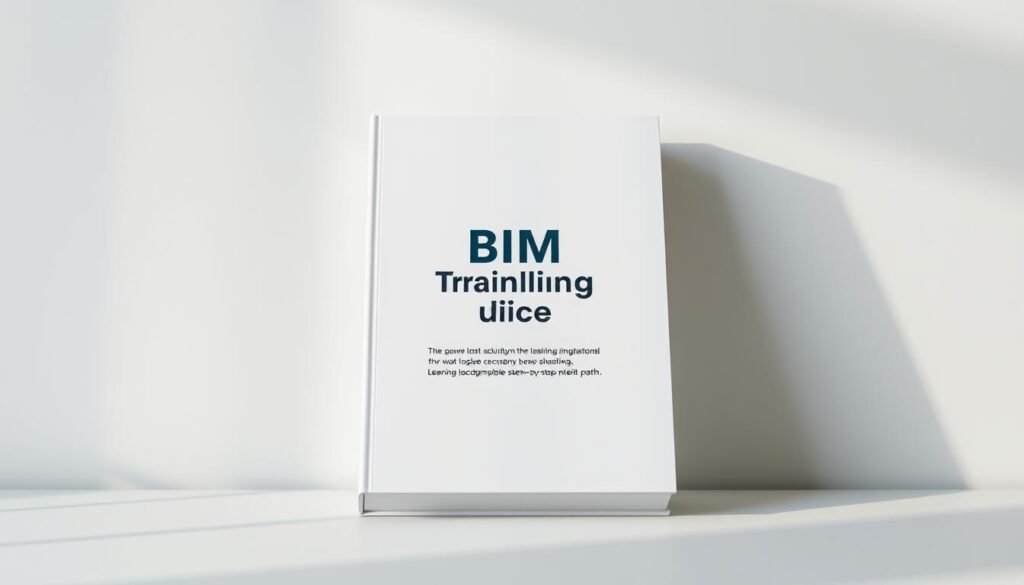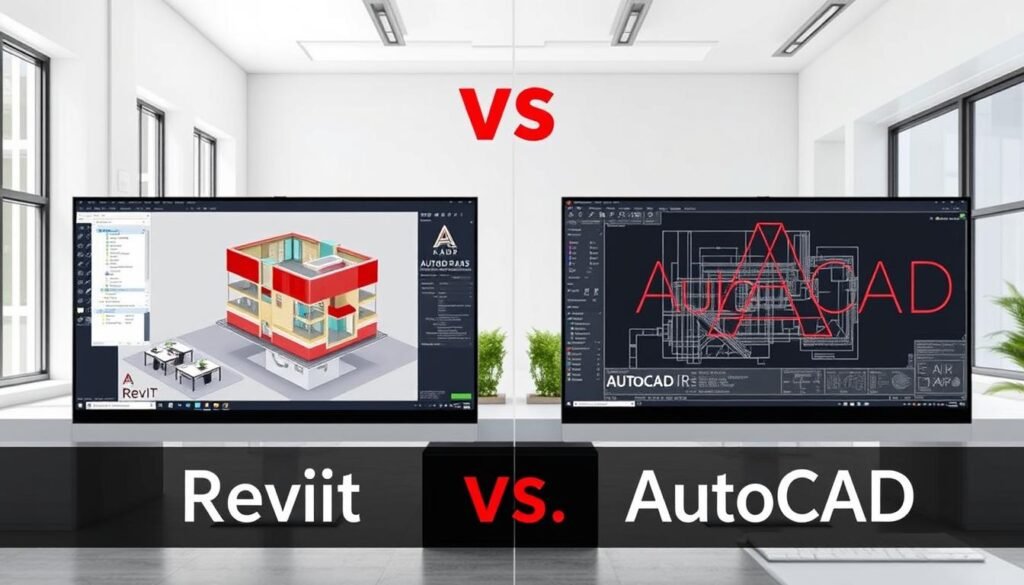Building Information Modeling is revolutionizing the architectural design process by providing a digital representation of the physical and functional characteristics of a building.
The use of BIM for architects has become increasingly important as it enables the creation of detailed, data-rich models that can be used throughout the building’s lifecycle.
As the construction industry continues to evolve, the adoption of building information modeling is becoming a standard practice, enhancing collaboration and decision-making among stakeholders.
Key Takeaways
- Understanding the basics of Building Information Modeling
- The significance of BIM in the architectural design process
- How BIM enhances collaboration and decision-making
- The benefits of adopting BIM in construction projects
- An overview of the guide’s content and structure
Understanding BIM Fundamentals
Building Information Modeling (BIM) is revolutionizing the architectural, engineering, and construction (AEC) industries with its advanced technology and collaborative workflows. As the industry continues to adopt BIM, understanding its fundamentals is crucial for professionals looking to stay competitive.
What is Building Information Modeling?
Building Information Modeling (BIM) is a digital representation of the physical and functional characteristics of a building or infrastructure project. It involves creating detailed 3D models that contain rich data, enabling stakeholders to make informed decisions throughout the project lifecycle. As Autodesk notes, “BIM is not just about creating a model; it’s about managing information throughout the project lifecycle.”
Core Concepts and Terminology
BIM encompasses various core concepts and terminology that are essential for understanding its application. Key terms include:
- Level of Development (LOD): A measure of the detail and reliability of BIM elements.
- Information Delivery Manual (IDM): A document that defines the information exchange requirements for a project.
- IFC (Industry Foundation Classes): An open standard for BIM data exchange.
How BIM Differs from Traditional CAD
BIM differs significantly from traditional Computer-Aided Design (CAD) systems. While CAD focuses on 2D drafting and basic 3D modeling, BIM creates intelligent 3D models that contain data-rich objects. This enables more accurate analysis, simulation, and collaboration throughout the project lifecycle.
As Chuck Eastman, a pioneer in BIM research, once said, “BIM is not just a software; it’s a process that involves the creation and management of digital representations of physical and functional characteristics of places.” This highlights the fundamental difference between BIM and traditional CAD.
The Evolution of BIM Technology
BIM technology has evolved significantly over the past few decades, from its early beginnings as a simple 3D modeling tool to a sophisticated platform that integrates various aspects of project design, construction, and management. The latest advancements in BIM, including BIM basics2025, are pushing the boundaries of what is possible in architectural design software.
BIM for Architects: Transforming Design Workflows
The adoption of Building Information Modeling (BIM) is revolutionizing the architectural design process, offering unprecedented opportunities for innovation and efficiency. As architects increasingly adopt BIM, they are discovering new ways to enhance their design workflows and improve project outcomes.
The Architect’s Role in the BIM Process
Architects play a crucial role in the BIM process, as they are typically the lead creators of the building information model. This involves not only designing the building’s form and function but also ensuring that the model is accurate, detailed, and coordinated with other stakeholders.
Benefits of BIM in Architectural Practice
BIM offers numerous benefits to architects, including improved design visualization and error reduction. Design visualization is enhanced through the creation of detailed 3D models that can be used to communicate design intent to clients and stakeholders.
Design Visualization and Client Communication
Effective design visualization enables architects to communicate complex design ideas more clearly, facilitating better client understanding and feedback. This leads to more informed decision-making and reduced misunderstandings during the construction process.
Error Reduction and Quality Control
BIM also enables architects to identify and rectify errors early in the design process, reducing the likelihood of costly changes during construction. By analyzing the model for potential issues, architects can ensure higher quality control and minimize the risk of construction delays.
Common Challenges Architects Face with BIM
Despite its benefits, BIM implementation can be challenging for architects, particularly those with limited experience or training. Common challenges include managing the complexity of BIM models, ensuring data consistency, and coordinating with other stakeholders who may be using different software or workflows.
By understanding these challenges and leveraging the capabilities of BIM, architects can transform their design workflows, leading to more efficient, sustainable, and innovative building designs.
BIM Basics2025: Latest Developments and Trends
As we step into 2025, the Building Information Modeling (BIM) landscape is witnessing significant transformations driven by technological advancements. The integration of Artificial Intelligence (AI) in BIM platforms is revolutionizing the way architects and designers work, enabling more efficient and accurate project execution.
AI Integration in BIM Platforms
AI is being increasingly used in BIM to automate repetitive tasks, predict potential design flaws, and enhance collaboration among project stakeholders. AI-powered BIM tools can analyze vast amounts of data, providing insights that help in making informed decisions. According to a recent industry report, “AI integration in BIM is expected to increase productivity by up to 30% by 2025.”
Cloud-Based Collaboration Advancements
Cloud-based collaboration is another significant trend in BIM 2025. It enables real-time collaboration among architects, engineers, and contractors, regardless of their geographical location. This has led to improved project outcomes and reduced errors. Cloud-based BIM platforms provide a centralized repository for project data, ensuring that all stakeholders have access to the latest information.
Sustainability Analysis Tools
Sustainability analysis is becoming increasingly important in BIM. Advanced tools are being developed to analyze the environmental impact of building designs, enabling architects to make more sustainable choices. Energy modeling and green building certification are critical aspects of sustainability analysis.
Energy Modeling and Green Building Certification
Energy modeling is a crucial aspect of sustainability analysis in BIM. It involves simulating the energy consumption of a building to identify areas of inefficiency. Green building certification, such as LEED, is also being integrated into BIM workflows, making it easier for architects to achieve sustainability goals. As noted by a leading sustainability expert, “Integrating energy modeling and green building certification into BIM is a game-changer for the AEC industry.”
“The future of BIM lies in its ability to integrate with other technologies, such as AI and IoT, to create a more sustainable and efficient built environment.”
Essential BIM Software for Architectural Design
As architectural practices in India increasingly adopt BIM, understanding the essential software becomes crucial. The right BIM tools can significantly enhance design workflows, improve collaboration, and increase project efficiency.
Autodesk Revit: Features and Capabilities
Autodesk Revit is a leading BIM software that offers a comprehensive set of tools for architectural design. Its capabilities include:
- Advanced modeling features for complex geometries
- Integrated documentation and annotation tools
- Collaboration features for multidisciplinary teams
Revit’s robust feature set makes it a popular choice among architects. As noted by Autodesk, “Revit allows architects to design with confidence, explore ideas, and deliver projects on time.”
ArchiCAD and Other Alternatives
While Autodesk Revit is widely used, other BIM software alternatives are gaining popularity. ArchiCAD, developed by Graphisoft, is a notable example, offering:
| Feature | ArchiCAD | Revit |
|---|---|---|
| Modeling Capabilities | Advanced parametric modeling | Comprehensive modeling tools |
| Collaboration | Seamless teamwork features | Integrated collaboration tools |
BIM Software Pricing and Accessibility in India
The cost of BIM software can be a significant factor for architectural firms in India. Autodesk Revit and ArchiCAD offer various pricing models, including subscription-based services.
Local Support and Training Resources
For firms in India, local support and training resources are essential for maximizing the benefits of BIM software. Many software providers offer:
- Regional training centers
- Online tutorials and webinars
- Certified training programs
Investing in proper training can significantly enhance the adoption and utilization of BIM technology in architectural practices.
Setting Up Your First BIM Project
Effective BIM project setup is the backbone of any successful architectural design project, enabling streamlined workflows and improved collaboration. A well-structured BIM implementation plan is crucial for maximizing the benefits of this technology.
Project Setup and Organization
Proper project setup involves establishing a clear folder structure and file naming conventions. This ensures that all team members can easily locate and access project files.
- Establish a consistent file naming protocol
- Create a logical folder hierarchy
- Define project phases and milestones
File Naming Conventions and Folder Structure
Developing a standardized file naming convention is vital for maintaining organization. This should include details such as project name, discipline, and date.
Template Creation and Standards
Creating project templates with predefined settings and standards can significantly enhance efficiency. This includes setting up standard views, sheets, and annotation families.
Key elements to include in BIM templates:
- Standard project views and sheets
- Predefined annotation families
- Consistent unit settings
Managing BIM Libraries
Effective management of BIM libraries is crucial for maintaining consistency across the project. This involves creating and maintaining families and components that adhere to project standards.
By focusing on these key areas, architects and designers can ensure a successful BIM project setup, laying the groundwork for efficient collaboration and high-quality project delivery.
BIM Training Guide: Step-by-Step Learning Path
To effectively leverage BIM technology, architects and designers need comprehensive training that covers both the fundamentals and advanced features of BIM software.
Self-Learning Resources and Tutorials
For those who prefer self-paced learning, numerous online resources are available, including video tutorials, webinars, and online forums. Autodesk’s official tutorials for Revit are a valuable resource for beginners. Additionally, platforms like Udemy and Coursera offer a wide range of BIM-related courses.
Formal Training Programs in India
India has seen a rise in institutions offering specialized BIM training programs. These programs are designed to cater to the growing demand for BIM professionals in the AEC industry.
Top BIM Training Institutes in Major Indian Cities
- Autodesk Authorized Training Centers in cities like Delhi, Mumbai, and Bangalore.
- BIM Institutes specializing in software like Revit, ArchiCAD, and Navisworks.
Certification Options for BIM Professionals
Certification can significantly enhance a professional’s credibility and job prospects. Autodesk Certified Professional exams are highly regarded in the industry. Other certification programs, such as those offered by Graphisoft for ArchiCAD, are also valuable.

Mastering BIM Modeling Techniques
To leverage the full potential of Building Information Modeling, professionals must master advanced modeling techniques. This involves understanding the intricacies of creating and modifying building elements, working effectively with families and components, and employing advanced modeling strategies.
Creating and Modifying Building Elements
Creating and modifying building elements is fundamental to BIM modeling. This process involves using software tools to design and edit the various components of a building, such as walls, floors, and roofs. Effective modification techniques enable architects to iterate on their designs efficiently.
- Utilize parametric tools to create adaptive elements.
- Employ advanced editing techniques for complex geometries.
- Use constraints to maintain design intent.
Working with Families and Components
Families and components are essential in BIM for creating reusable content. They enable architects to standardize elements across projects, enhancing consistency and productivity.
Creating Custom Components for Indian Architectural Elements
Creating custom components tailored to specific architectural styles, such as those found in Indian architecture, is particularly valuable. This involves designing components that reflect local building traditions and requirements, such as intricate carvings or specific material properties.
Advanced Modeling Strategies
Advanced modeling strategies in BIM involve techniques such as using solid modeling operations, implementing advanced family creation methods, and leveraging model organization tools. These strategies help in managing complex projects and improving model performance.
Key strategies include:
- Using worksharing to collaborate effectively.
- Implementing model checking to ensure quality.
- Optimizing model performance for large projects.
Collaborative BIM Workflows
Collaboration is at the heart of BIM, enabling seamless interaction among various project stakeholders. Effective collaborative workflows are crucial for the success of BIM projects, involving architects, engineers, contractors, and clients.
Working with Consultants and Engineers
Collaboration with consultants and engineers is a critical aspect of BIM workflows. This involves regular coordination meetings and the use of cloud-based platforms to share information and track project progress. By working together effectively, teams can identify and resolve potential issues early in the project lifecycle.
File Sharing and Version Control
Efficient file sharing and version control are essential components of collaborative BIM workflows. Teams use cloud-based storage solutions and BIM collaboration tools to manage different versions of project files, ensuring that all stakeholders are working with the most up-to-date information.
- Implement a centralized file storage system.
- Use version control to track changes.
- Establish clear protocols for file naming and organization.
Clash Detection and Coordination
Clash detection is a critical process in BIM that helps identify conflicts between different building systems. By using clash detection software, teams can detect and resolve clashes early, reducing the risk of costly rework during construction.
Resolving Common Coordination Issues
Coordination issues can arise due to various factors, including miscommunication and inconsistent data. To resolve these issues, teams should implement clear communication protocols and use standardized data formats. Regular coordination meetings and the use of collaboration tools can also help mitigate these challenges.
By optimizing BIM workflows for collaboration, teams can improve project outcomes, reduce errors, and enhance overall efficiency. This involves leveraging the right tools, processes, and strategies to facilitate effective collaboration among all project stakeholders.
BIM Implementation Strategies for Indian Architectural Firms
Implementing BIM technology is a strategic move for Indian architectural firms looking to enhance their design and construction processes. As the industry continues to evolve, adopting BIM can significantly improve project outcomes, streamline workflows, and enhance collaboration among stakeholders.
Developing a BIM Execution Plan
A well-structured BIM execution plan is crucial for successful implementation. This plan should outline the project’s objectives, define the roles and responsibilities of team members, and establish the standards and protocols for BIM modeling and data management. Effective planning ensures that BIM is integrated into every phase of the project lifecycle, from design through construction to operation.
To develop a comprehensive BIM execution plan, firms should consider the following elements:
- Project goals and deliverables
- BIM standards and protocols
- Data management and coordination procedures
- Training and support for team members
Staff Training and Transition Management
Successful BIM implementation requires more than just technology; it demands a skilled team proficient in using BIM software and workflows. Investing in staff training is essential to ensure a smooth transition to BIM-based processes. Training programs should be tailored to the needs of the firm, covering both the technical aspects of BIM software and the broader implications of BIM on project workflows.
“The key to successful BIM implementation lies not just in the technology itself, but in the people who use it.” –
ROI Considerations for Indian Practices
When implementing BIM, Indian architectural firms must consider the return on investment (ROI). While the initial costs of BIM software and training can be significant, the long-term benefits often outweigh these expenses. BIM can lead to improved project efficiency, reduced errors, and enhanced collaboration, ultimately resulting in cost savings and increased profitability.
Government Initiatives Supporting BIM Adoption
The Indian government has launched several initiatives to promote the adoption of BIM in the construction industry. These initiatives include guidelines for BIM implementation, funding for BIM training programs, and incentives for firms that adopt BIM. Staying informed about these initiatives can help firms leverage government support for their BIM implementation efforts.

Virtual Construction Modeling with BIM
Virtual construction modeling with BIM is revolutionizing the way construction projects are planned and executed in India. By integrating time and cost dimensions into the BIM model, virtual construction modeling enables a more comprehensive project planning and management process.
4D Scheduling and Construction Sequencing
The incorporation of the time dimension into BIM models, known as 4D scheduling, allows for the visualization of the construction sequence and timeline. This enables project stakeholders to identify potential delays and optimize the construction schedule.
5D Cost Estimation Integration
5D cost estimation involves linking cost data to the BIM model, providing real-time cost estimates throughout the project lifecycle. This facilitates better cost management and decision-making.
Adapting to Indian Construction Cost Standards
To effectively implement 5D cost estimation in India, it is crucial to adapt the process to local construction cost standards and practices. This may involve integrating cost data from local sources and ensuring compliance with Indian cost estimation norms.
Construction Documentation from BIM Models
BIM models can be used to generate accurate and detailed construction documentation, reducing errors and improving the overall quality of the construction process.
| BIM Dimension | Description | Benefits |
|---|---|---|
| 3D | Geometric representation | Improved visualization |
| 4D | Time dimension integration | Enhanced scheduling |
| 5D | Cost estimation integration | Better cost management |
BIM Workflow Optimization for Efficiency
To maximize the benefits of BIM, optimizing workflows is essential for architectural firms. Efficient BIM workflows can significantly enhance productivity, reduce errors, and improve collaboration among project stakeholders.
Automating Repetitive Tasks
One key strategy for BIM workflow optimization is automating repetitive tasks. By leveraging tools like Dynamo in Autodesk Revit or scripting in ArchiCAD, architects can automate mundane tasks, freeing up time for more complex and creative work. This not only boosts productivity but also reduces the likelihood of human error.
Performance Optimization Techniques
Optimizing BIM model performance is crucial for maintaining smooth workflows. Techniques include using worksharing to divide large projects into manageable segments, optimizing family creation, and regularly purging unused elements. These strategies help in maintaining model integrity and improving overall system performance.
Quality Control and Model Checking
Implementing robust quality control measures is vital for ensuring the accuracy and reliability of BIM models. This involves regular model checking using tools like Solibri or Navisworks to identify and rectify issues early in the project lifecycle.
Establishing Quality Assurance Protocols
Establishing clear quality assurance protocols is essential for maintaining high standards in BIM projects. This includes defining standards for model creation, data management, and collaboration. By having these protocols in place, firms can ensure consistency across projects and teams.
Conclusion: Embracing BIM as the Future of Architectural Design
As the architectural, engineering, and construction (AEC) industry continues to evolve, Building Information Modeling (BIM) has emerged as a critical tool for architects and designers. By adopting BIM for architects, professionals can streamline their design workflows, improve collaboration, and enhance the overall quality of their projects.
The benefits of BIM are multifaceted, from improved accuracy and reduced errors to enhanced sustainability analysis and construction planning. As BIM technology continues to advance, it is likely to play an increasingly important role in shaping the future of architectural design.
For Indian architectural firms, embracing BIM is crucial for remaining competitive in a rapidly changing global market. By investing in BIM training and implementation, architects can unlock new opportunities and drive innovation in their practice. As the industry continues to adopt BIM, it is clear that this technology will be a key driver of success for architects and designers in the years to come.

